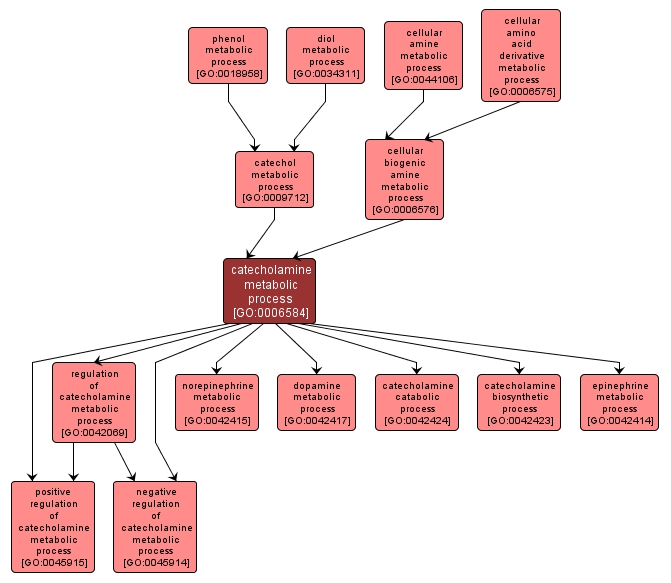GO TERM SUMMARY
|
| Name: |
catecholamine metabolic process |
| Acc: |
GO:0006584 |
| Aspect: |
Biological Process |
| Desc: |
The chemical reactions and pathways involving any of a group of physiologically important biogenic amines that possess a catechol (3,4-dihydroxyphenyl) nucleus and are derivatives of 3,4-dihydroxyphenylethylamine. |
| Synonyms:
|
|

|
INTERACTIVE GO GRAPH
|














